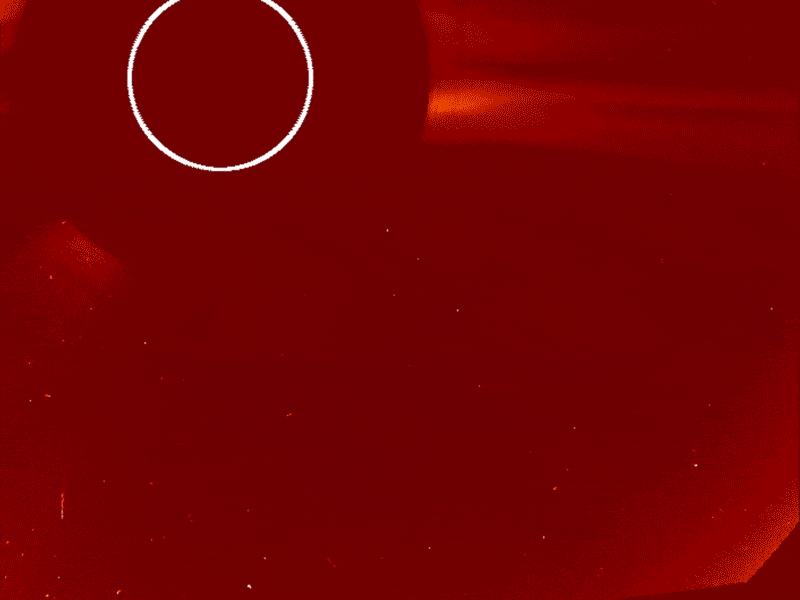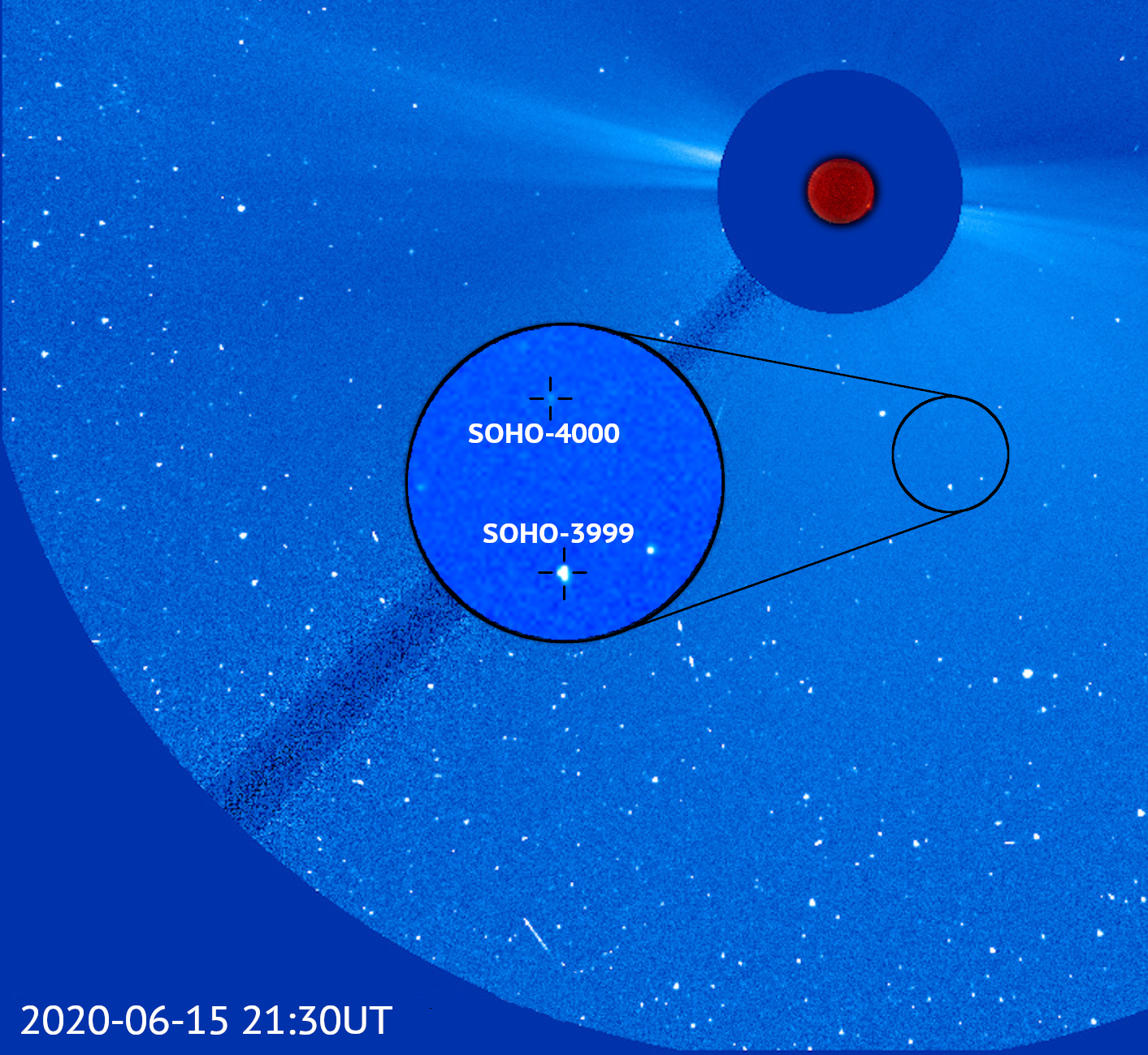4,000 comets! Sun-watching spacecraft's discoveries keep piling up
SOHO keeps doing work.
A spacecraft that launched a quarter century ago to study the sun has discovered its 4,000th new comet, continuing a spree of serendipitous science.
NASA and the European Space Agency (ESA) collaborated to launch the Solar and Heliospheric Observatory, or SOHO, spacecraft in 1995. Designed to last three years, SOHO was tailored to study the sun, in particular by imaging the sun's outer atmosphere, or corona, and the birth of the solar wind, a stream of charged particles that flows off the sun and across the solar system. But that work also gives SOHO a prime vantage point for spotting comets that dart perilously close to the sun, it turns out.
"Not only has SOHO rewritten the history books in terms of solar physics, but, unexpectedly, it's rewritten the books in terms of comets as well," Karl Battams, a space scientist at the U.S. Naval Research Lab in Washington, D.C., who works on SOHO and manages its comet-finding program, said in a statement.
Related: Photos: Spectacular comet views from Earth and space

Because SOHO's main aim is studying the sun, the comet-identification program is powered by amateur volunteers. Lucky comet number 4,000 was spotted by Trygve Prestgard, who has identified around 120 comets through the program, which also incorporates imagery from another NASA sun mission, Solar Terrestrial Relations Observatory or STEREO.
For SOHO, most of the discoveries come from data gathered by the spacecraft's Large Angle and Spectrometric Coronagraph (LASCO), which blocks out the brightest region of the sun to give scientists a better look at the faint corona.
And it's through the corona that sungrazing comets, also known as the Kreutz family of comets, pass, according to NASA. SOHO blocks out the sun well enough that its instruments can spot even small, faint comets, like the one currently called SOHO-4000, which scientists estimate is just 15 to 30 feet (5 to 10 meters) across.
Get the Space.com Newsletter
Breaking space news, the latest updates on rocket launches, skywatching events and more!

Although scientists working on the project knew that SOHO was racking up its cometary discoveries, they expected it would be a bit longer before the spacecraft's data led to the 4,000th such identification.
But the spacecraft completed a special observing run in early June to coincide with the fifth sun flyby of NASA's Parker Solar Probe in order to double up on data of the same solar structures. The campaign also involved doubling SOHO's usual exposure time, allowing the spacecraft to spot smaller, fainter objects like SOHO-4000.
"I feel very fortunate to have found SOHO's 4,000th comet. Although I knew that SOHO was nearing its 4,000th comet discovery, I did not initially think that this sungrazer would be it," Prestgard said. "It was only after discussing with other SOHO comet hunters, and counting through the most recent sungrazer discoveries, that the idea sunk in. I am honored to be part of such an amazing collaborative effort."
- Comet eaten by the sun as spacecraft watches
- Comet Atlas is falling apart, new photos confirm
- As Comet ATLAS crumbles away, Comet SWAN arrives to take its place for skywatchers
Email Meghan Bartels at mbartels@space.com or follow her @meghanbartels. Follow us on Twitter @Spacedotcom and on Facebook.
OFFER: Save 45% on 'All About Space' 'How it Works' and 'All About History'!
For a limited time, you can take out a digital subscription to any of our best-selling science magazines for just $2.38 per month, or 45% off the standard price for the first three months.
Join our Space Forums to keep talking space on the latest missions, night sky and more! And if you have a news tip, correction or comment, let us know at: community@space.com.

Meghan is a senior writer at Space.com and has more than five years' experience as a science journalist based in New York City. She joined Space.com in July 2018, with previous writing published in outlets including Newsweek and Audubon. Meghan earned an MA in science journalism from New York University and a BA in classics from Georgetown University, and in her free time she enjoys reading and visiting museums. Follow her on Twitter at @meghanbartels.










